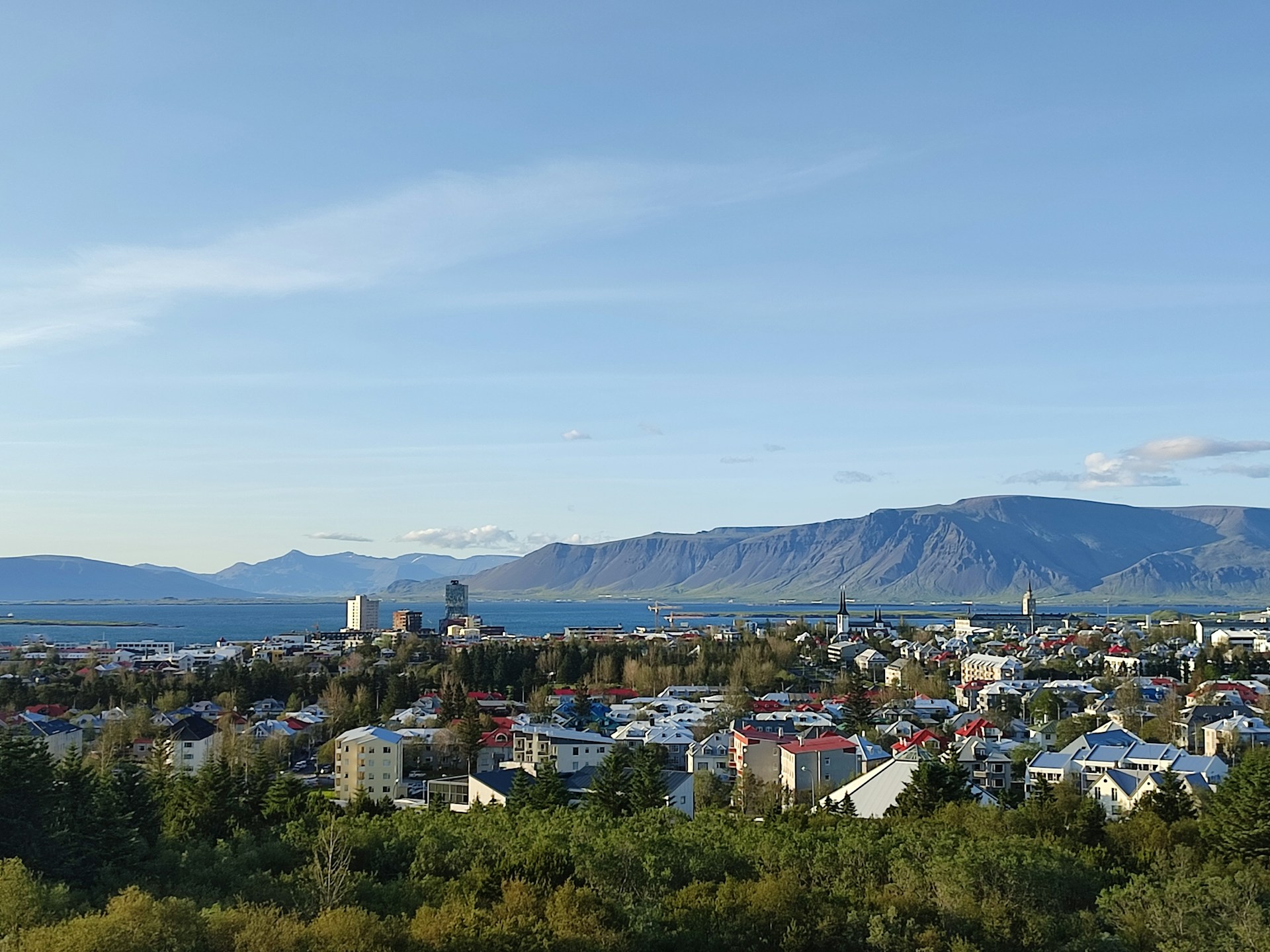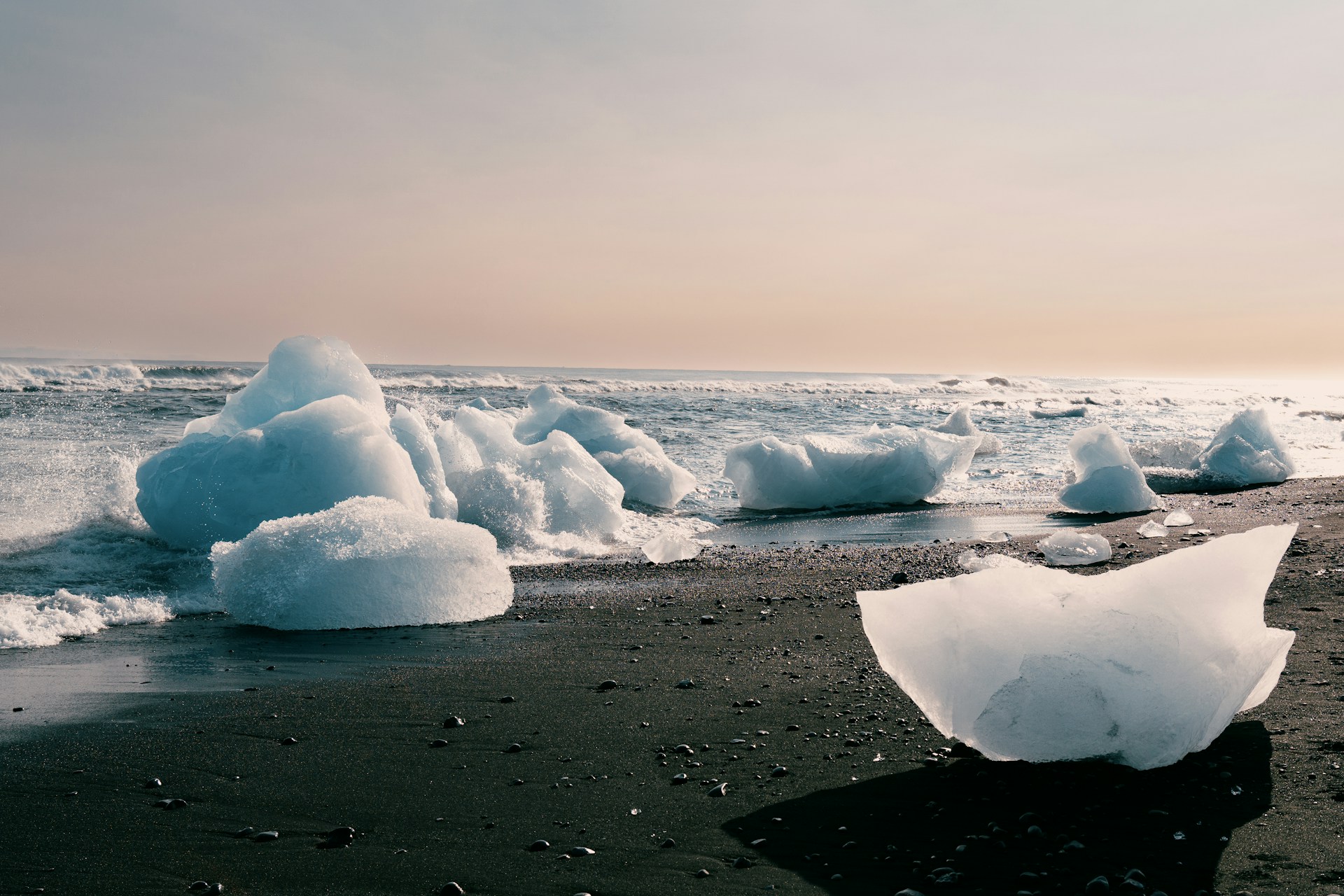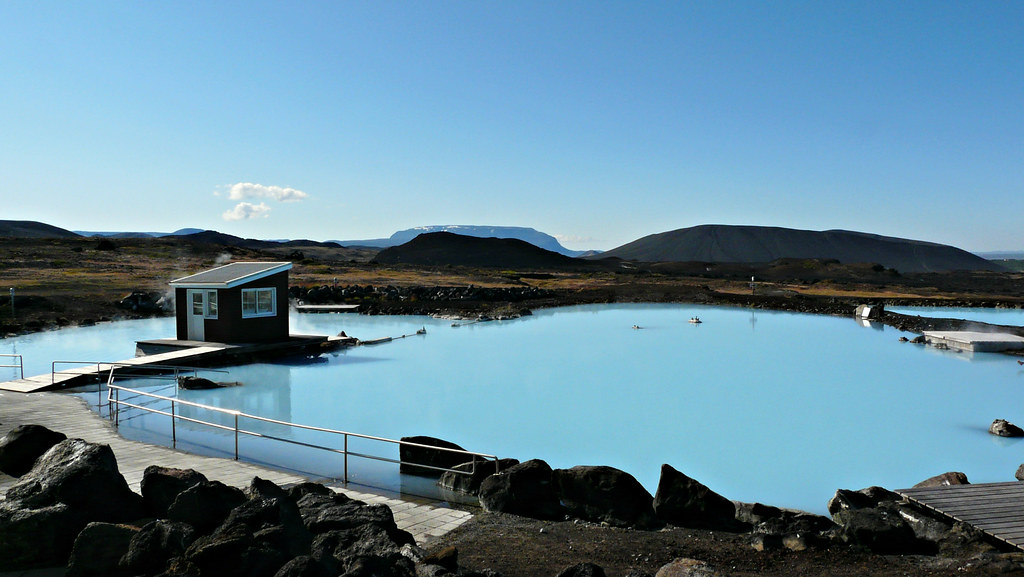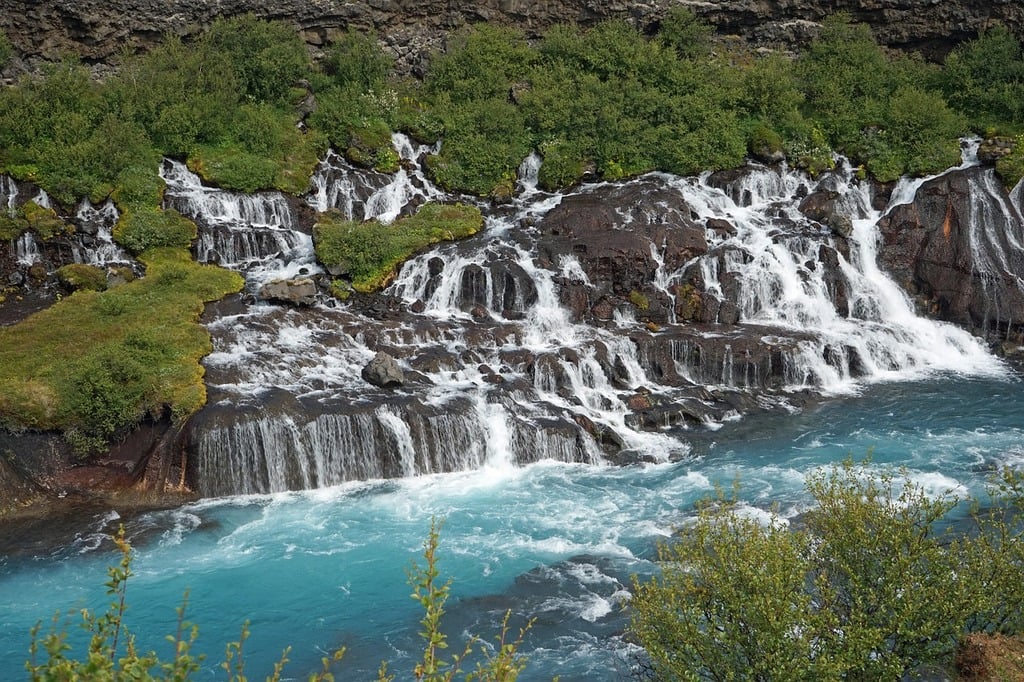Campervan vs. Car in Iceland: Which Is Better for Your Trip?
Deciding between a campervan or car in Iceland? This guide compares comfort, cost, camping rules, and seasonal considerations.
Traveling around Iceland is like stepping into another world. Every corner reveals something new, from powerful waterfalls and black sand beaches to glaciers and steaming hot springs. The best way to see all of this is by driving the Ring Road, the main highway that circles the island. With two weeks, you can enjoy Iceland at a comfortable pace, without rushing through its wonders. This itinerary will take you through a full 14-day journey, showing you how to make the most of your adventure.
The Ring Road, also called Route 1, is the main highway that circles Iceland. It stretches for about 1,332 kilometers, or 828 miles. Most of it is paved and in good condition, although you should still expect gravel patches in remote areas. Driving the entire road without stopping would take around 16 to 18 hours, but that would defeat the purpose. The magic of the Ring Road is in the stops you make along the way.
By following this route, you get to experience Iceland’s incredible variety of landscapes. In just two weeks you will see glaciers in the south, fjords in the east, volcanic deserts in the north, and lush valleys in the west. You will also pass through charming fishing towns, geothermal areas, and national parks that show why Iceland is called the Land of Fire and Ice.

Your adventure starts in Reykjavik, Iceland’s lively capital. Most international flights land at Keflavik International Airport, about 45 minutes from the city. After picking up your rental car, drive to Reykjavik and settle into your accommodation. The city is small but full of charm, with colorful buildings and a cozy vibe. Spend your first day exploring its main sights.
Start at Hallgrimskirkja, the towering church that looks like a rocket ship. Its design is inspired by Iceland’s basalt cliffs, and you can climb the tower for a view of the city’s rooftops and the harbor. Nearby, wander down Laugavegur, the main street lined with shops, cafes, and murals. Grab a coffee at Sandholt Bakery, known for its fresh pastries. For lunch, try Icelandic Street Food for a bowl of hearty soup served in a bread bowl, a local favorite.
In the afternoon, visit the Sun Voyager, a steel sculpture shaped like a Viking ship, set against the sea. It’s a great spot for photos, especially at sunset. If you have time, check out the Harpa Concert Hall, a glass building that sparkles like fish scales. End your day with dinner at a cozy restaurant like Icelandic Street Food or Dill, which serves modern Icelandic dishes. Get a good night’s rest—you’ll need energy for the road ahead.
Tip: Book your rental car in advance, ideally a 4x4 if you plan to explore smaller roads. Driving in Iceland is straightforward, but weather can change fast, so check road conditions daily at road.is.
The Golden Circle is a must-do day trip from Reykjavik, covering three iconic sites. Start early to avoid crowds. First, head to Thingvellir National Park, about 45 minutes from the city. This UNESCO World Heritage Site is where Iceland’s parliament was founded in 930 AD. It’s also where two tectonic plates meet, creating a rift valley you can walk through. The Silfra fissure, filled with crystal-clear water, is a popular spot for snorkeling, but you’ll need to book ahead.
Next, drive 30 minutes to Geysir Hot Springs. The star here is Strokkur, a geyser that erupts every 5 to 10 minutes, shooting water up to 100 feet in the air. It’s mesmerizing to watch, and the surrounding geothermal pools bubble with heat. Bring a raincoat—mist from the geyser can soak you.
Your final stop is Gullfoss, a massive waterfall just 10 minutes away. Known as the “Golden Waterfall,” it plunges into a deep canyon, creating rainbows on sunny days. Walk the path to the viewing platform for a close-up look. Afterward, grab lunch at the Gullfoss visitor center, which serves warm soups and sandwiches.
Return to Reykjavik for the night, or stay at a nearby guesthouse if you want a quieter evening. The Golden Circle is a perfect introduction to Iceland’s natural wonders, blending history, geology, and raw beauty.

Today, you begin your Ring Road journey, heading to the South Coast. Drive about two hours from Reykjavik to Seljalandsfoss, a tall waterfall you can walk behind. The path gets slippery, so wear sturdy shoes. A short walk away is Gljufrabui, a hidden waterfall tucked in a canyon—don’t miss it.
Continue 30 minutes to Skogafoss, another stunning waterfall. Climb the stairs to the top for a panoramic view of the coast. Legend says a Viking hid treasure behind the falls, so keep an eye out (just kidding). Nearby, visit the Skogar Museum to learn about Iceland’s history, from Viking tools to traditional turf houses.
Your next stop is Reynisfjara Beach, near the village of Vík, about an hour away. This black sand beach is famous for its basalt columns and sea stacks. The waves here are powerful, so stay away from the water’s edge. In Vík, grab dinner at Sudur-Vik, a cozy spot with pizza and local dishes. Stay overnight in Vík or a nearby guesthouse.
From Vík, drive east toward Skaftafell, part of Vatnajokull National Park. Stop at Vík’s church for a quick view of the village from above, then head to Fjadrargljufur Canyon, about an hour away. This narrow, moss-covered canyon is a hidden gem. A short hike takes you to a viewpoint over its twisting river.
Next, drive 90 minutes to Skaftafell. This area is a hiker’s paradise, with trails for all levels. The most popular is the path to Svartifoss, a waterfall framed by black basalt columns. The round-trip hike takes about two hours and offers sweeping views of glaciers and mountains. If you’re up for more, try the longer trail to Kristinartindar peaks for a tougher challenge.
Spend the night at a guesthouse or campsite in Skaftafell. The area feels remote, with Vatnajokull, Europe’s largest glacier, looming nearby. If you’re lucky, you might catch the northern lights in the evening—September to April is the best time.

Today’s highlight is Jokulsarlon Glacier Lagoon, a 70-minute drive from Skaftafell. This lagoon is filled with floating icebergs that break off from Vatnajokull. Take a boat tour to get up close to the ice—zodiac tours are thrilling, while amphibian boats are more relaxed. Seals often swim among the icebergs, adding to the magic.
Across the road is Diamond Beach, where ice chunks wash up on black sand, sparkling like gems. It’s a photographer’s dream. Spend time walking the shore and soaking in the surreal scene. For lunch, the cafe at Jokulsarlon serves hot drinks and snacks.
Continue east to Seydisfjordur, a charming village about two hours away. The drive takes you through Petra’s Stone Collection, a quirky garden of rocks collected by a local woman. In Seydisfjordur, explore the colorful houses and the puffin colony if you’re visiting in summer. Stay overnight in a guesthouse and enjoy dinner at Nordic Restaurant, known for its fresh fish.
The East Fjords are one of Iceland’s quieter regions, with rugged cliffs and fishing villages. From Seydisfjordur, drive to Petra’s Stone Collection if you missed it yesterday, then head to Puffin Colony at Borgarfjordur Eystri, about 90 minutes away. Summer visitors can see thousands of puffins nesting on the cliffs. The viewing platform is easy to reach, and the birds are surprisingly close.
Continue to Egilsstadir, the main town in East Iceland, about an hour away. Stop at Lake Lagarfljot, said to be home to a mythical serpent. The lake’s calm waters are perfect for a short walk. In Egilsstadir, visit the East Iceland Heritage Museum to learn about local life, from fishing to reindeer herding. Reindeer are unique to this part of Iceland, introduced from Norway in the 18th century.
Stay overnight in Egilsstadir and eat at Salt Cafe and Bistro, which offers burgers and local dishes. The town is a good base for exploring the east.

Head north to Lake Myvatn, about two hours from Egilsstadir. This area is a hotspot for geothermal activity and birdlife. Start at Namaskard, a steaming field of mud pools and fumaroles. The sulfur smell is strong, but the colorful earth is worth seeing. Wear shoes you don’t mind getting muddy.
Next, visit the Myvatn Nature Baths, a smaller, quieter version of the Blue Lagoon. Soak in the warm, mineral-rich water while surrounded by lava fields. It’s a great way to relax after days of driving. For lunch, try Vogafjos Farm, a cozy spot with homemade bread and local cheese.
In the afternoon, explore the lava formations at Dimmuborgir, known as the “Dark Castles.” A short walk takes you through strange rock shapes formed by ancient lava flows. If time allows, visit Skutustadagigar, a series of pseudo-craters by the lake. Stay overnight in Myvatn or nearby Husavik.
Husavik, 45 minutes from Myvatn, is Iceland’s whale-watching capital. Book a morning tour with North Sailing or Gentle Giants for a three-hour trip into Skjalfandi Bay. You might see humpback whales, minke whales, or even orcas. The boats provide warm suits, but dress in layers—it’s cold on the water.
After the tour, visit the Husavik Whale Museum to learn about marine life and Iceland’s whaling history. Grab lunch at Gamli Baukur, a harborside restaurant with fish soup and fresh cod. In the afternoon, drive to Godafoss, the “Waterfall of the Gods,” about 45 minutes away. This wide, crescent-shaped fall is stunning, with easy trails for viewing.
Continue to Akureyri, Iceland’s second-largest city, about 30 minutes from Godafoss. Check into your accommodation and explore the city’s botanical garden or stroll along the harbor. Dinner at Rub23, known for its seafood and sushi, is a great way to end the day.

Spend the morning in Akureyri, a vibrant city with a small-town feel. Visit the Akureyri Church, with its striking staircase and stained-glass windows. Stop by the Laufas Turf Houses, a 20-minute drive away, to see how Icelanders lived in the 19th century. The grass-covered homes are both charming and practical, built to withstand harsh winters.
In the afternoon, drive to Siglufjordur, about an hour away, a fishing village with a rich history. The Herring Era Museum tells the story of Iceland’s herring boom, which once powered the economy. Wander the colorful streets and grab coffee at a local cafe. Return to Akureyri for the night, or stay in Siglufjordur for a quieter evening.
Drive west toward Blonduos, about two hours from Akureyri. Stop at Hvitserkur, a 50-foot rock formation in the sea that looks like a drinking rhino. Local legend says it’s a troll turned to stone. The viewing area is a short walk from the parking lot.
Continue to the Icelandic Seal Center in Hvammstangi, 30 minutes away, to learn about Iceland’s seal population. If you’re lucky, you might spot seals along the coast. For lunch, try Sjávarborg Restaurant, known for its fish dishes. Drive to Borgarnes, about two hours away, and settle in for the night. Borgarnes is a good base for exploring West Iceland, with a small museum on Viking history.
The Snaefellsnes Peninsula, often called “Iceland in Miniature,” is a two-hour drive from Borgarnes. Start at Kirkjufell, a mountain famous for its arrowhead shape, featured in Game of Thrones. The nearby Kirkjufellsfoss waterfall adds to the scene. It’s a great spot for photos, especially at sunrise or sunset.
Next, drive 30 minutes to Djupalonssandur Beach, a black pebble beach with rusted shipwreck remains. Test your strength by lifting the “lifting stones” used by fishermen centuries ago. Continue to Arnarstapi, a tiny village with a dramatic sea arch and cliff walks. The views of Snaefellsjokull, a glacier-capped volcano, are breathtaking.
End your day in Grundarfjordur or Stykkisholmur, both charming towns with guesthouses. Eat at Narfeyrarstofa in Stykkisholmur for fresh seafood and a cozy atmosphere.

From the peninsula, drive to Hraunfossar, about two hours away. This unique waterfall flows out of a lava field, creating a series of streams that look like they’re pouring from nowhere. Nearby, Barnafoss waterfall has a tragic legend about two children who drowned crossing its rapids.
Visit Deildartunguhver, Europe’s most powerful hot spring, 30 minutes away. The steaming water is used to heat nearby towns. If you have time, stop at the Krauma Spa for a dip in geothermal pools. Spend the night in Borgarnes or a nearby farm stay, soaking in the peaceful countryside.
Return to Reykjavik, about an hour from Borgarnes. Spend your final full day exploring more of the city or taking a short day trip. Visit the Perlan Museum for its interactive exhibits on Iceland’s geology, including a man-made ice cave. The observation deck offers 360-degree views of the city and mountains.
For a relaxing afternoon, drive 45 minutes to the Blue Lagoon. Book a slot in advance to soak in the warm, milky-blue waters. The silica mud masks are a fun touch, and the lagoon’s setting among lava fields is surreal. Alternatively, try the Sky Lagoon for a newer, less crowded option closer to Reykjavik.
On your final day, drive to Keflavik Airport, about 45 minutes from Reykjavik. Return your rental car and catch your flight home. If you have a morning flight, grab breakfast at a cafe in Reykjavik before leaving. Take one last look at Iceland’s dramatic landscape from the plane—it’s a view you won’t forget.
Iceland is more than just a destination. It feels like a journey into the raw forces of nature. Driving the Ring Road in two weeks lets you see the country’s many faces, from fiery volcanoes to icy glaciers. This itinerary balances famous spots with peaceful corners, giving you a complete picture of the island.
Whether you are soaking in hot springs, standing in awe before waterfalls, or simply driving through endless landscapes, Iceland will leave its mark on your heart. Fourteen days may seem long, but once you are there, you may wish for even more time.
It depends on your travel style. Budget travelers may spend around 100–150 USD per day, while mid-range and comfort travelers often spend 200–350 USD per day. Costs include car rental, gas, food, and accommodation.
Yes, Iceland is safe for driving, but the weather can change quickly. Always check the road and weather conditions before setting out, and drive carefully, especially in winter.
Yes, Iceland has many campgrounds along the Ring Road. Wild camping is not allowed, so you must stay in marked campgrounds. Camping is a good way to save money and enjoy nature.
Bring layers of clothing, waterproof jackets, sturdy shoes, a swimsuit for hot springs, and reusable water bottles. The weather changes fast, so be ready for both sun and rain at any time of year.